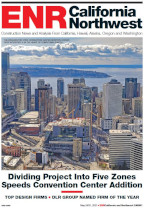 Photo: The $2 billion Meadowlands Xanadu complex in New Jersey will feature districts for sports, entertainment, youth culture, food and home, and fashion. (Photo courtesy of Meadowlands Development)
|
Developers of the Meadowlands Xanadu project in New Jersey are attempting to redeem themselves after controversy surrounding the emerging colorful buildings at the site.
Although the New Jersey Sports and Exhibition Authority approved the plans for the development in 2004, the agency recently summoned architects and developers to discuss the internal and external changes which do not match the original design plans. Larry Siegel, president of the Meadowlands Development, hinted that a new “entertainment anchor” that will soon be announced will cause the plans to be altered yet again before the project is complete.
“In a project like this, design always changes, because uses change,” he said. “When we announce this new large entertainment anchor that is going to sit on [Interstate] 95, it will change the design of the building, it will change the way it looks out front and there storefront will change the way it looks inside. But most of what was originally promised is being built.”
|
Meadowlands would not reveal the identity of the anchor.
Dan Haggarty, senior vice president of Xanadu, echoed Siegel’s insistence. “The land plan is very similar to the first land plan around the time of the RFPs,” he said. The primary difference, he pointed out, was that all public spaces were simply re-themed.
Both representatives of Xanadu claim these design concerns will not affect the opening plans in November 2008.
The mammoth Meadowlands project in East Rutherford, New Jersey includes construction of the new $998 million Giants/Jets stadium, Continental Airlines Arena, Meadowlands Racetrack and the entertainment and retail component Xanadu as well as at $150 million New Jersey Transit addition to accommodate visitors.
The $2 billion entertainment and retail complex features five “districts”—sports, entertainment, youth culture, food and home, fashion—and is expected to generate more than $100,000 million annually as well as create over 30,000 construction jobs, said Siegel. As of late March, the 2 million-sq-ft complex has topped out at five stories and all steel has been erected. The buildings are now almost fully enclosed with cladding.
Of the variety of green initiatives Xanadu is undertaking, the largest is the start of a pilot program with New Jersey’s Department of Environmental Protection. “We are working with the DEP and our contractors to do pilot program for diesel emissions, so we modified a variety of actual construction equipment like dump trucks and lifts,” said Haggarty. “It’s the first time they are taking the data in N.J. . . . and they are going to use it to be able to better understand how to improve some of the exhaust from future construction.”
The team has taken extensive steps to ensure the snow dome is very heavily insulated and is energy efficient. “It operates less energy than an office building,” said Siegel. “It has no windows and is built like a freezer.” Xanadu is also interested in further exploring solar use and is hoping the snow dome in particular will be solar at some point, said Haggarty.
In addition, all of the construction vehicles commissioned for Xanadu use low sulfur fuel. The building is also piped for a water reuse system and is undertaking a full recycling program.
“We hope to be as green as possible,” said Siegel.





Post a comment to this article
Report Abusive Comment